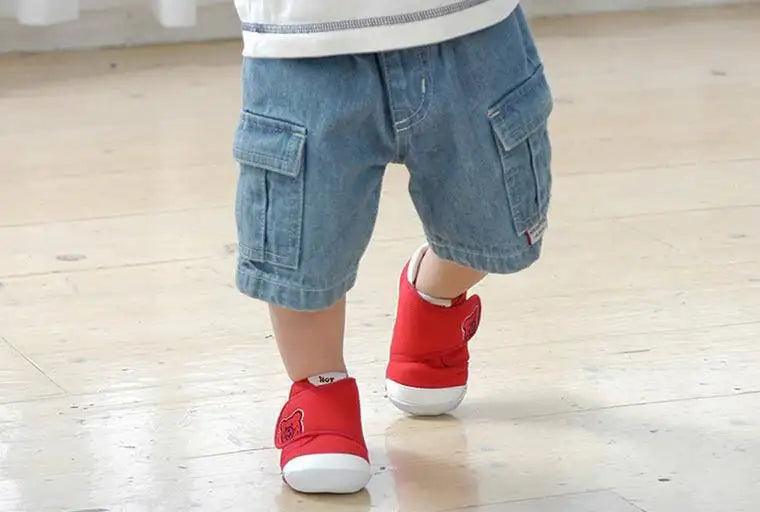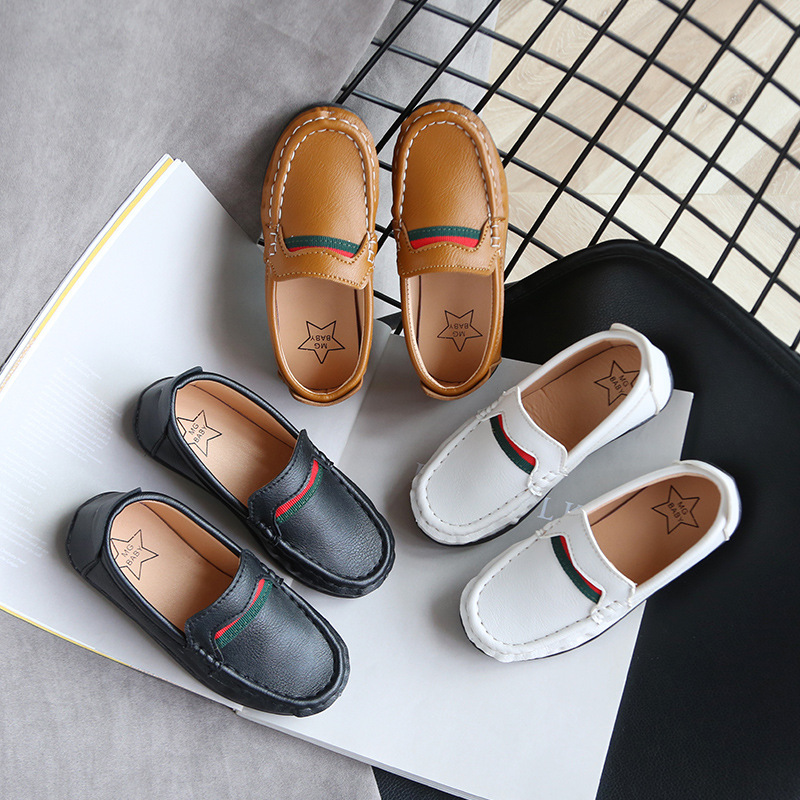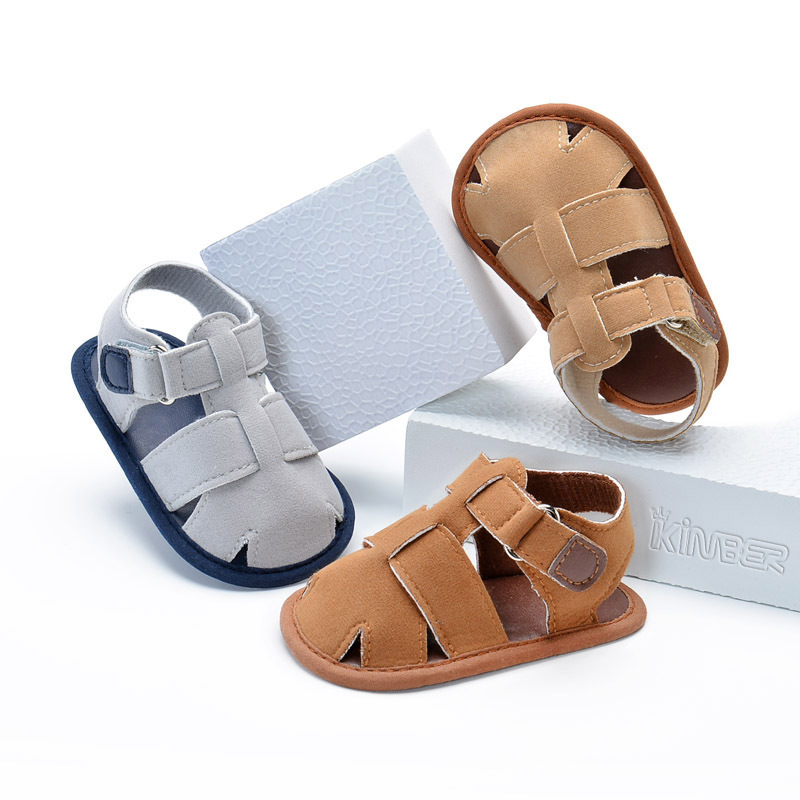Best Baby Shoes of 2022
•Posted on April 29 2022

In fact, shoeing is a "piece of cake" for little babies. Smaller babies are either held or laid down every day, so they don't need shoes. Once the child crawls and wants to walk, buying and wearing shoes becomes an important thing. From crawling to walking, babies walking at home with bare feet (wearing socks in winter) helps stimulate the development of tactile nerves, allowing the palms of the feet in contact with the ground to feed back information to the brain, enabling better completion of various toddler fine movements. But take this period of the child out, they will certainly ask to walk on the ground. So we need to seriously consider the purchase of toddler shoes for children.
- Selection advice
- Which shoes are not recommended to buy
- Product recommendations
Selection advice
The biggest difference between children's shoes and other children's clothing is that it is not a smaller version of adult shoes, like cave shoes, snow boots, leather boots with heel, etc. are not suitable for children. Because children's foot development characteristics are different from adult foot characteristics, we need to buy professional children's shoes according to the age of the child.
12~24 months
At this age, children have thicker fatty palms, and most of the foot bones are calcified cartilage, and most children do not have an arch before the age of 2. So, most children's shoes at this stage have the following two characteristics: 1. the sole is relatively soft, one third of the shoe can be bent, and the height of the sole plus the insole is not more than 5 mm. 2. the shape of the shoe matches the shape of the foot, and the toe is spacious with buckle stickers for easy on and off.
24~48 months
Children walk relatively steadily after the age of 2, and their grown-up feet are not a fleshy mess like when they were young. Many children's shoe brands call this stage of shoes, steady shoes. They are characterized by a slightly thicker sole, about 5~10mm, and a slightly stiffer heel, which protects the child's soft ankle joints, prevents the ankle joints from being tilted by the force, and prevents O- or X-shaped legs. We can pick the right shoes according to these methods:
- Soles that bend naturally in the front 1/3 of the shoe.
- The heel and toe of the shoe should be hard enough to protect the child's ankle joint and prevent knocking the toes.
- Twisting the shoes a little, not too easily deformed, with sufficient stability.
- The forefoot area of the insole should not be too soft.
- The shoes do not have a pungent odor.
In addition, I recommend that parents do not buy too many shoes for their children, just buy 2-3 pairs per season. The younger a child is, the faster his or her feet grow. 2 to 6 years old, the growth rate of children's feet becomes relatively regular, about 0.5cm of foot length per quarter, about 2cm per year. 6 years old, 0.5cm of foot length per year (equivalent to one size of shoe size). When parents buy shoes for their children, remember to measure the foot length in real time: in summer, wear thin socks to determine the length of your child's foot + 0.5cm; in winter, wear thick socks to determine the length of your child's foot + 1cm.
Combined with the law of children's foot length growth and development and the rules of shoe sizing, I suggest that you should never hoard shoes for your child! Before the age of 6, you should buy 2~3 pairs of shoes after measuring the length of your child's feet in the new season, and you will need about 8~12 pairs of shoes of different thicknesses a year; after the age of 6, you can wear shoes in spring and autumn every year, but you need to buy shoes in summer and winter separately.
Which shoes are not recommended to buy
1. Shoes with safety hazards.
Young children are not suitable to wear holey shoes (slipper)! However, the sole is plastic foam with poor breathability, soft material, and loose features inside the shoe, which simply cannot fix and protect the child's foot and can easily cause inversion or exostosis deformity. In order to ensure the performance and appearance of shoes, many companies in the production process will add plastic additives, coloring agents, etc., however, this may lead to high levels of harmful substances in shoes, which in turn affect human health. In addition, studies have shown that children wearing slipper will increase the risk of being involved in the escalator when riding the escalator.
It is not recommended to buy shoes that can light up and make sounds, such shoes are easy to distract children. Especially just put on the child, love to stare at the shoes, very fresh, at this time if walking on the big horse is easy to ignore the road situation and cause danger.
There are also some poor quality children's plastic sandals or synthetic leather children's shoes, this kind of shoes picked up and smelled, the smell is generally relatively large, is the hardest hit by heavy metals and plasticizers exceed the standard.
2. Cool and fashionable shoes
Some fashionable and good-looking shoes are not suitable for children to wear, such as basketball shoes, high-heeled small leather shoes, snow boots, etc. Basketball shoes, high heeled shoes are likely to exceed the heel height. Because the bones, muscles and ligaments of children's feet are not yet well developed, they are not suitable for wearing shoes with too high a heel. And children are generally active, wearing high-heeled children's shoes, in the chase play is also easy to sprain feet. Most of the snow boots are all flat bottom, this design is not ergonomic, but also does not meet the characteristics of the child's foot shape. Then there is the snow boots shape is relatively fat, thick inner layer of fur, when walking, shoes on the foot can not play a fixed, supporting role. Long-term wear has the risk of broken feet and toe injuries.
3. Used shoes with worn heels
For the sake of environmental protection, the second-hand economy is being promoted. When we get children's shoes, first visual inspection of the heel, and then look at the shoe insole, to make sure that the heel and insole are not worn before giving the child to wear. Because each baby's foot shape and walking force and other circumstances are different, the shoes will be deformed after a period of time with uneven force, and then give another child to wear will naturally affect the development of their feet.
4. Shoes that are too big or too small
Some parents buy clothes for children like to buy two sizes larger, but buy shoes should not be so. Small feet wearing large shoes gap, affecting walking habits also easy to cause toe injuries, and large shoes do not follow the foot, the child is easy to lose balance and fall. Therefore, I suggest that you can take out the child's shoes that can still be worn last year when the season changes, to prevent the child's feet from being shoved into the small shoes.
Product recommendations
Here are some recommended hot products. However, parents need to buy according to the specific condition of their children.
1.
2.
3.
4.
5.
6.
7.








Comments
0 Comments
Leave a Comment